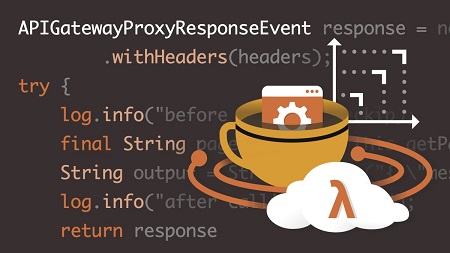
English | MP4 | AVC 1280×720 | AAC 44KHz 2ch | 1h 19m | 272 MB
Welcome to this hands-on course covering the benefits and limitations of using AWS to create serverless Java applications. In this course, instructor Terezija Semenski shows you how to set up the environment and IntelliJ IDE so that you can develop, deploy, and debug your code on AWS Lambda. Terezija gets you started by writing your first “hello world” serverless application and exposing it via REST API. Plus, she explains how to implement custom inputs and outputs of the Lambda function and best practices around logging, tracing and performance tuning. By the end of this course, you will know how to build efficient serverless Java applications.
Table of Contents
Introduction
1 Take advantage of Java Serverless programming
2 What you need to know
1. Exploring the Power of Serverless Architecture
3 Why serverless
4 Benefits and limitations of serverless
5 Exploring AWS Lambda programming model
2. Setting Up Your Environment
6 Setting up development user
7 Configure AWS Command Line Interface (CLI)
8 Configure AWS Toolkit for IntelliJ IDEA
3. Getting Started with Serverless Java
9 Write a simple Java serverless application
10 Deploy and invoke Java serverless app from IntelliJ IDEA
11 Explore and invoke Lambda function on AWS Console
4. Deep Dive into Serverless Java Programming Model
12 AWS Lambda function internals
13 Incorporate logging in your Lambda function
14 Error handling implementation
15 Trace, debug, and optimize Lambda applications
5. Customize Input and Output of Lambda Function
16 Understand different Lambda inputs and outputs
17 Write custom input and output
18 Challenge Customize handler method with new inputoutput
19 Solution Customize handler method with new inputoutput
Conclusion
20 Next steps
Resolve the captcha to access the links!